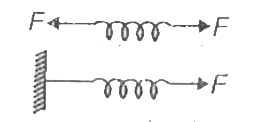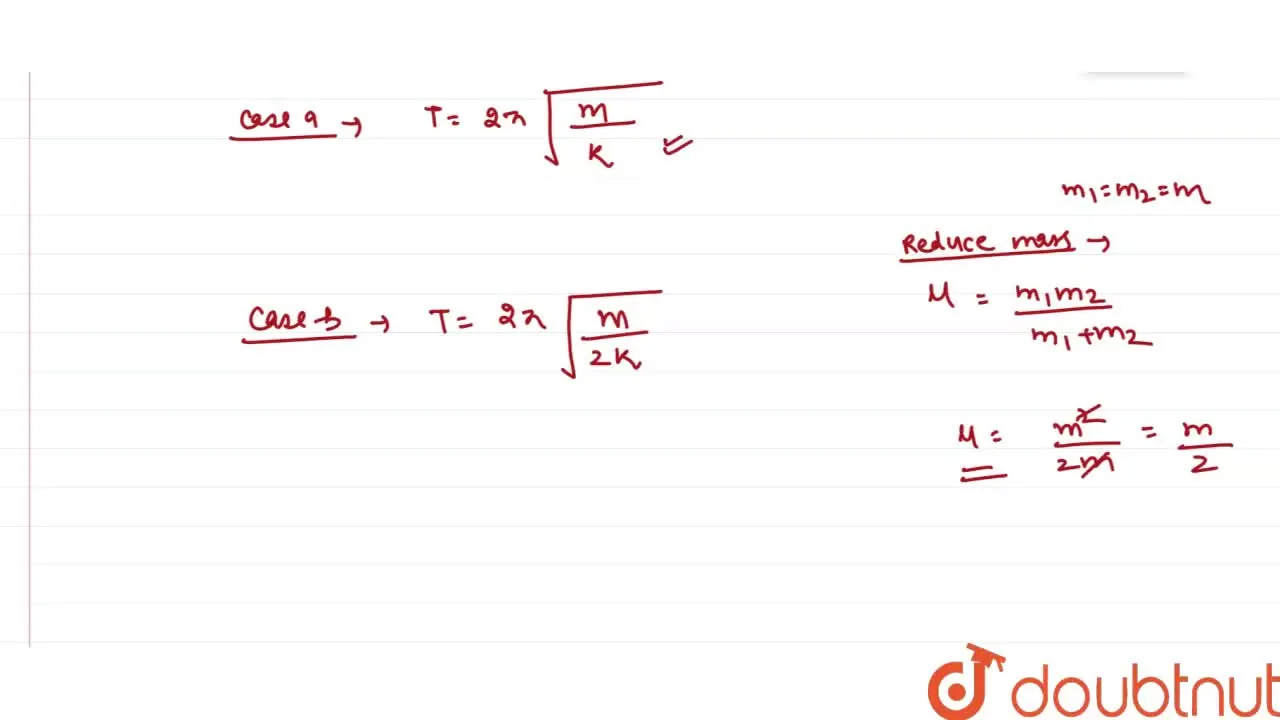Figure a) shows a spring of force constant k clamped rigidly at once end and a mass m attached to its free end. A force F applied at the free end stretches the spring. Figure b) shows the same spring with both ends free and attached to a mass m at either end. Each end of the spring in figure is stretched by the same force F.
(a) What is the maximum extension of the spring in the two cases ?
(b) If the mass in figure and the two masses in figure are released free, what is the period of oscillation in each case?

(a) Let y be the maximum extension produced in the spring in Fig. (a)
Then F = ky (in magnitude) ∴y=Fk
(b) ln fig. (a), F = - ky
⇒ma=−ky⇒a=−kmy ∴ω2=kmi.e.,ω=√km
Therefore, period T=2πω=2π√mk
In fig. (b), we may consider that the centre of the system is O and there are two springs each of length l2 attached to the two masses, each m, so that K is the spring factor of each of the springs.
Then, K = 2k
∴T=2π√mK
=2π√m2k

Related Playlists
Similar Questions

Figure. (a) shows a spring of force constant k fixed at one end and carrying a mass m at the other end placed on a horizontal frictionless surface. The spring is stretched by a force F. Figure. (b) shows the same spring with both endsf free and a mass m fixed at each free end Each of the spring is streched by the same force F. The mass in case (a) and the masses in case (b) are then released. Which of the following statements are true?View SolutionA spring with one end attached to a mass and the other to a right support is stretched and released
View SolutionAn ideal spring with spring constant k is hung from the ceiling and a block of mass M is attached to its lower end. The mass is released with the spring initially unstretched. Then the maximum extension in the spring is
View SolutionAn ideal spring with spring constant k is hung from the ceiling and a block of mass M is attached to its lower end. The mass is released with the spring initially unstretched. Then the maximum extension in the spring is
View SolutionA spring is stretched by applying a load to its free end. The strain produced in the spring is
View SolutionA spring is stretched by applying a load to its free end. The strain produced in the spring is
View SolutionFigure shows tow cases. In first case a spring (spring constant K) is pulled by two equal and opposite forces F at both ends and in second case is pulled by a force F at one end. Extensions (x) in the springs will be
 View Solution
View SolutionTwo springs have force constants kA such that kB=2kA. The four ends of the springs are stretched by the same force. If energy stored in spring A is E, then energy stored in spring B is
View SolutionWhen two spring balances joined at their free ends, are pulled apart, both show the same reading. Explain.
View SolutionTwo springs have their force constants in the ratio of 3:4. Both the springs are stretched by applying equal force F. If elongation in first spring is x then elogation is second spring is
View Solution


